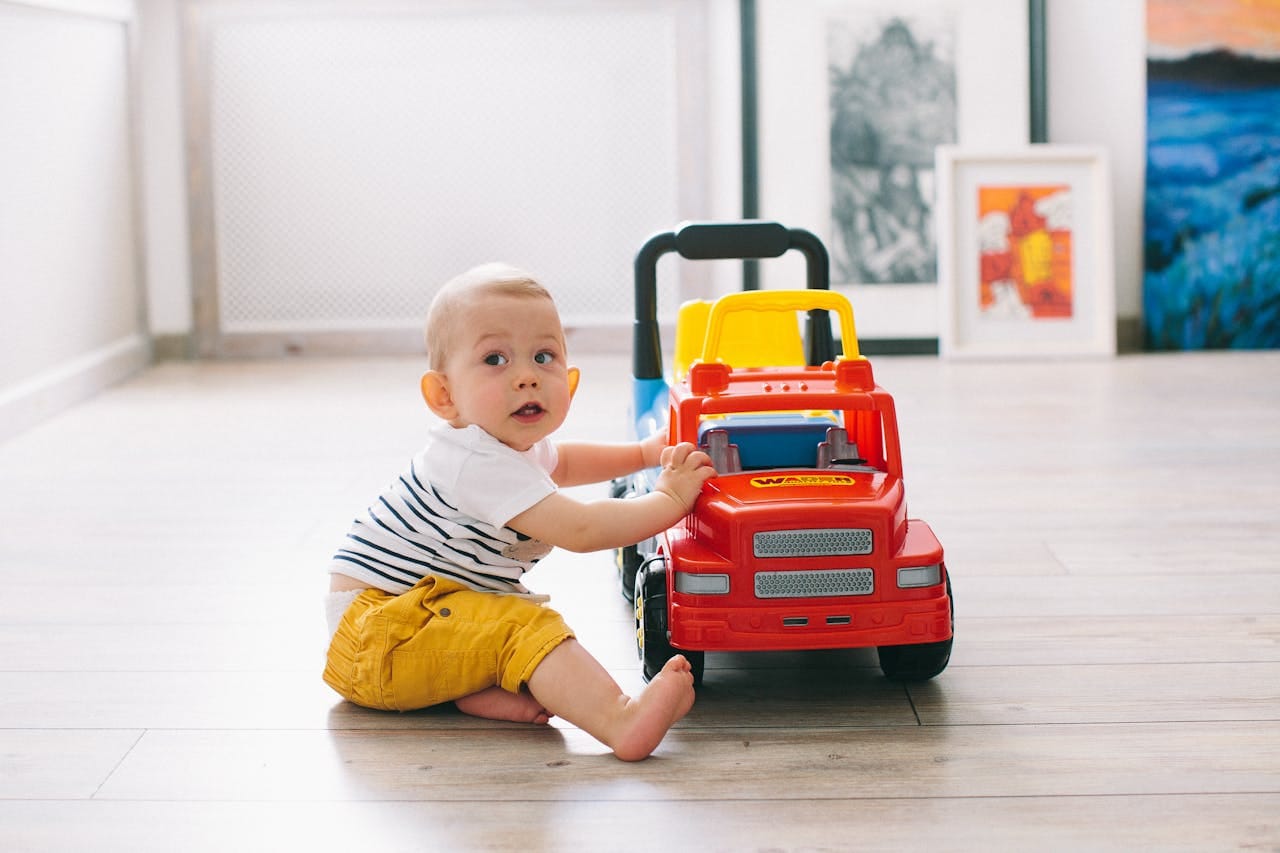Play is more than just a fun activity for babies; it’s a crucial component of their early development. Through play, infants explore their surroundings, strengthen their motor skills, and develop emotional and cognitive abilities. Research consistently highlights that engaging in play is essential for fostering curiosity, problem-solving, and social interaction in babies. This article delves into the pivotal role of play in early baby development and offers insights into how parents can support their child’s growth through age-appropriate play activities.
Why Play Matters for Babies
From the moment they’re born, babies begin to learn about the world around them. Play provides a natural and effective way for them to make sense of their environment. Whether it’s grasping a toy, mimicking a caregiver’s smile, or babbling during interactive games, every playful activity contributes to developmental milestones.
Experts from the American Academy of Pediatrics emphasize that play is not just a leisure activity but a powerful tool for enhancing brain development. During play, neural connections are formed and strengthened, particularly in areas related to memory, attention, and problem-solving. These early experiences lay the foundation for lifelong learning and adaptability.
Key Benefits of Play in Baby Development
1. Cognitive Growth
Play stimulates a baby’s brain and encourages exploration, which is critical for cognitive development. Activities like stacking blocks, shaking rattles, or playing peek-a-boo teach cause-and-effect relationships, spatial awareness, and object permanence.
2. Motor Skill Development
Gross and fine motor skills are honed during playtime. For instance, reaching for a toy strengthens hand-eye coordination, while crawling after a rolling ball boosts muscle development and spatial orientation.
3. Social and Emotional Skills
Interactive play helps babies bond with caregivers and develop emotional intelligence. Games like “pat-a-cake” or “hide-and-seek” foster trust and joy, while also teaching them to recognize and respond to social cues.
4. Language and Communication
Babies learn to communicate by imitating sounds and gestures during play. Simple activities like singing nursery rhymes or talking to them while they play nurture their linguistic skills and promote early vocabulary development.
Types of Play for Different Developmental Stages
0-3 Months: Sensory Play
At this stage, babies are discovering their senses. High-contrast toys, gentle rattles, and soft textures engage their vision, hearing, and touch. Tummy time is particularly beneficial, as it strengthens neck and shoulder muscles while encouraging exploration.
4-6 Months: Exploratory Play
Babies begin to grasp and manipulate objects. Offer toys like teething rings, textured books, and stacking cups to stimulate curiosity and fine motor skills. Encourage interaction through playful facial expressions and sounds.
7-12 Months: Interactive Play
As babies become more mobile, they enjoy games that involve movement and social interaction. Activities like crawling through tunnels, playing with musical toys, and mimicking gestures promote coordination and bonding.
How Parents Can Encourage Play
1. Create a Safe Play Environment
Ensure your baby has a safe space to explore and play. Remove any small objects or hazards, and provide age-appropriate toys that stimulate their senses and curiosity.
2. Engage in Interactive Play
Join your baby during playtime to strengthen your bond and encourage social skills. Face-to-face interaction, such as smiling and mimicking their sounds, fosters a sense of connection and trust.
3. Rotate Toys and Activities
Introduce variety by rotating toys or trying new activities. This keeps your baby’s interest alive and encourages them to explore different textures, shapes, and functions.
4. Limit Screen Time
The World Health Organization advises against screen time for children under one year old. Instead, prioritize active play that engages your baby’s senses and imagination.
Common Myths About Baby Play
Myth 1: Babies Don’t Need Toys
While babies can indeed play with everyday objects, toys designed for their age group provide targeted developmental benefits. For example, sensory toys enhance exploration, and stacking toys improve hand-eye coordination.
Myth 2: Play is Just for Fun
Play is foundational for learning and development, not just a way to keep babies entertained. Structured and free play both contribute to essential growth milestones.
Myth 3: Babies Need Expensive Toys
High-quality play doesn’t have to come with a high price tag. Simple items like wooden spoons, cardboard boxes, or scarves can provide hours of developmental fun.
Final Thoughts
Play is a cornerstone of early baby development, fostering growth in cognitive, motor, social, and emotional domains. By engaging in age-appropriate play and creating enriching experiences, parents can help their baby reach critical milestones while building a strong bond. Remember, the key is to make playtime enjoyable and interactive, turning every moment into a learning opportunity.
For additional guidance on supporting your baby’s development through play, consult resources like the American Academy of Pediatrics or the World Health Organization. These organizations provide valuable insights and evidence-based recommendations for parents.

